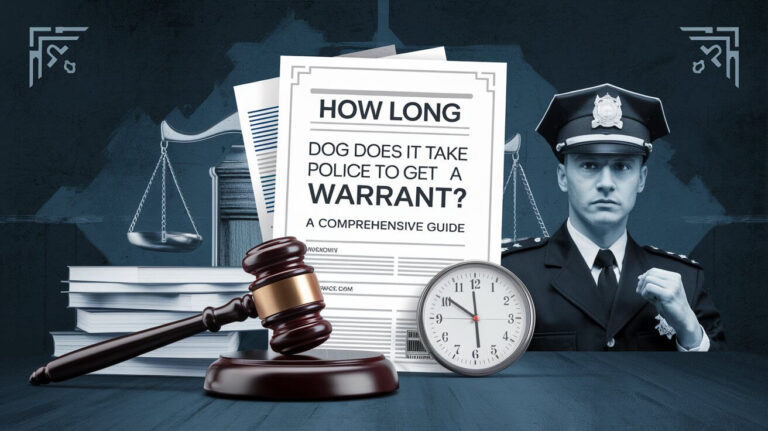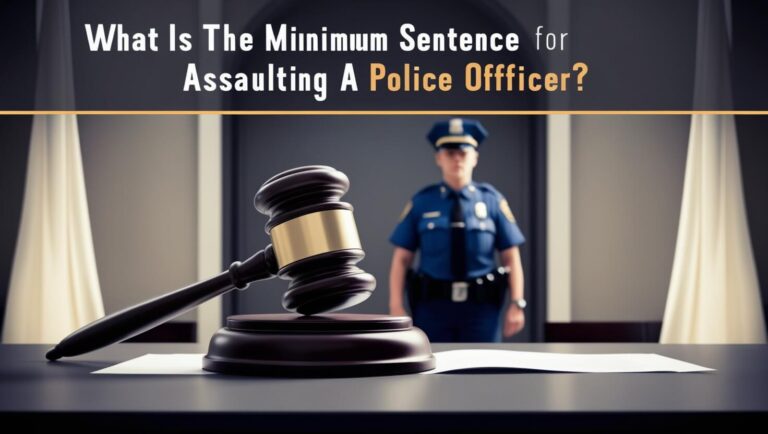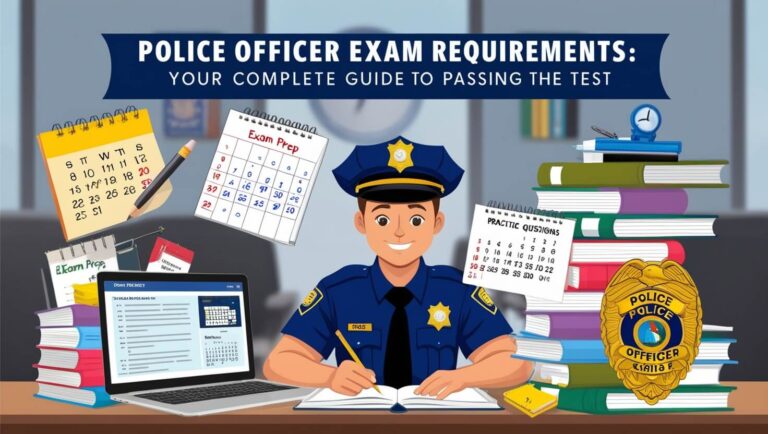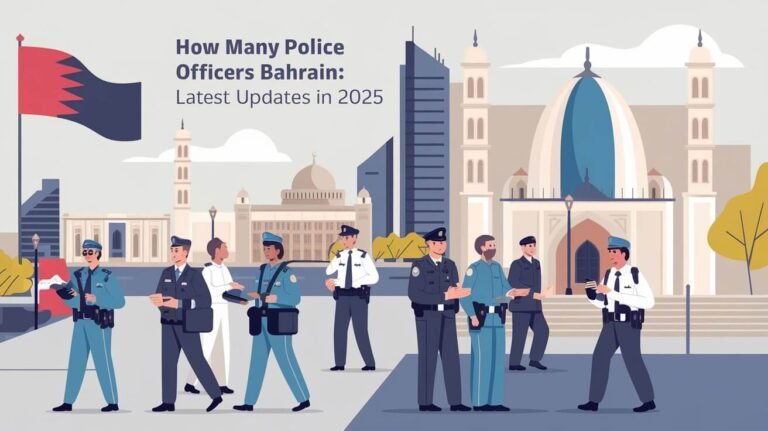How Many Police Officers Mongolia: Total Numbers and Duties
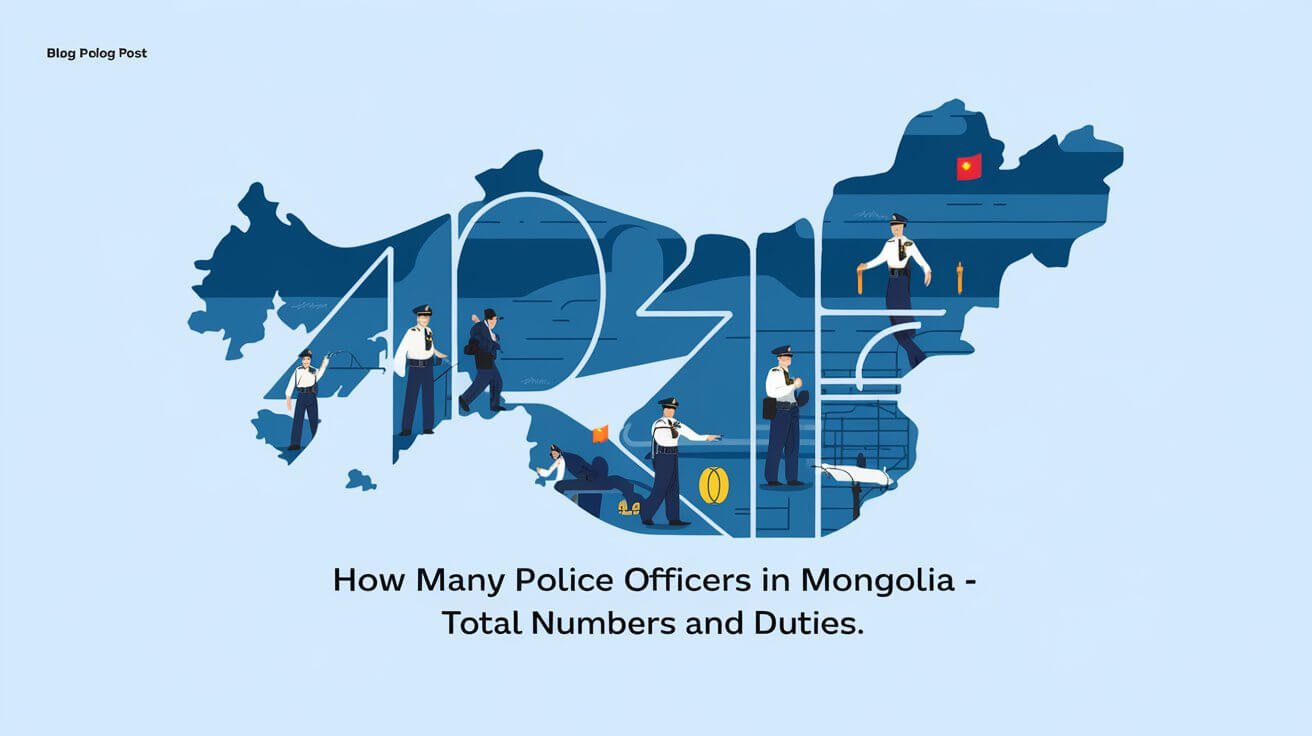
The Mongolian police force is key to keeping the country safe. It is the main group that fights crime and protects people’s rights. Starting in 1921, they have worked hard to keep everyone safe.
The police are vital for keeping society in order and stopping crimes. They have a Director and several departments. These teams work together to keep everyone safe and follow the law. The police are essential for the safety of Mongolians.
Current Police Force Statistics in Mongolia
The police force in Mongolia is key to keeping the country safe. Looking at the police force statistics helps us see how it’s doing. With about 12,000 active officers, the police are well-equipped to keep the peace.
Number of officers per person is a key measure of police strength. In Mongolia, this number is around 1:1,000. This shows the police have enough people to meet the community’s needs.
Total Active Officers
The number of active officers in Mongolia is a big deal. With 12,000 officers, the police can handle many tasks. These include keeping order, solving crimes, and helping the community.
Officer-to-Population Ratio
The ratio of officers to people is important. A ratio of 1:1,000 means the police are staffed well. They can offer good law enforcement services to everyone.
Gender Distribution
The gender mix in the police force is also important. In Mongolia, about 20% of officers are women. This balance is key to making sure the police reflect the community they serve.
| Category | Statistic |
|---|---|
| Total Active Officers | 12,000 |
| Officer-to-Population Ratio | 1:1,000 |
| Gender Distribution (Female Officers) | 20% |
Mongolian Police Force Structure
The police force in Mongolia is set up to keep the community safe. It has a Director at the top, who guides the whole team. The Director has help from First Deputy and two Deputy Directors, who manage different parts of the force.
The force has several key departments. These include Administration, Finance and Logistic, Criminal Police, Investigations, and Traffic Police. Together, they keep the peace, solve crimes, and help the public.
Some important tasks of the police include:
- Maintaining law and order in urban and rural areas
- Preventing and investigating crimes, such as murder, robbery, and human trafficking
- Providing public safety services, such as traffic management and emergency response
- Collaborating with other law enforcement agencies to combat organized crime and corruption
Structure of the police force in Mongolia is vital for public safety. It works hard to stop and solve crimes, offer safety services, and team up with other agencies to fight crime and corruption.
| Department | Function |
|---|---|
| Administration | Provides administrative support to the police force |
| Finance and Logistic | Manages the financial and logistical operations of the police force |
| Criminal Police | Investigates and prevents crimes, such as murder and robbery |
| Investigations | Conducts investigations into crimes and gathers evidence |
| Traffic Police | Manages traffic and provides public safety services |
Regional Distribution of Police Personnel
The way police are spread out in Mongolia is key to keeping the country safe. They focus on both cities and rural areas. This ensures every part of the country gets the police support it needs.
In cities like Ulaanbaatar, more police are needed because of the big crowds and crime. But in the countryside, police are spread out to cover the wide spaces. Special areas also get special police teams.
Key Factors in Regional Distribution
- Population density: Cities need more police because they’re so crowded.
- Crime rates: Places with more crime get more police to keep things safe.
- Geographical terrain: The countryside’s vastness means police are spread out more.
Having the right number of police in each area is vital. It helps the Mongolian police serve the community well. By understanding these factors, they can make their policing better.
| Region | Population | Police Personnel |
|---|---|---|
| Ulaanbaatar | 1.3 million | 5,000 |
| Rural areas | 0.5 million | 1,500 |
| Special administrative regions | 0.2 million | 800 |
Police Training Standards and Requirements
Police training is key for law enforcement to do their job well and keep people safe. In Mongolia, the police have a detailed training plan. This includes basic, specialized, and ongoing professional development. It helps officers learn the skills and knowledge needed to enforce laws and protect the community.
The training covers important topics like human rights. This ensures officers know and respect citizens’ rights. Yet, over 10,000 police in Mongolia lack human rights training. To fix this, training programs have been started. For example, a manual on “The right to be free from torture” was published and given to law enforcement.
Some notable training efforts include: * A total of 1666 officers have taken part in 3366-hour courses on preventing torture. * In 2016, 331 officers learned about the crime of torture and other cruel treatment. * The Mongolian Bar Association has added human rights topics to its lawyer training. * Commissioner Oyunchimeg Purev from the Human Rights Commission of Mongolia is part of the APF/APT Torture Prevention Ambassadors project.
| Year | Number of Officers Trained | Training Hours |
|---|---|---|
| 2016 | 331 | 14 |
| 2017 | 196 | 16 |
| 2018 | 1139 | 36 |
These efforts show the push to better police training standards in Mongolia. The focus is on law enforcement and keeping the public safe.
Special Law Enforcement Units
The Mongolian police force has special units for keeping public order and security. These units tackle specific security threats. They work together to keep citizens and visitors safe.
Key units include the counter-terrorism division, border protection, and criminal investigation. The counter-terrorism division fights terrorist threats. Border protection units keep the country’s borders safe. The criminal investigation department solves serious crimes like murder and robbery.
Key Responsibilities
- Counter-terrorism division: preventing and responding to terrorist threats
- Border protection units: securing the country’s borders
- Criminal investigation department: investigating serious crimes
These units are vital for Mongolia’s security and stability. They share intelligence with other agencies and international partners. This helps them stay ahead of threats. By focusing on these units, Mongolia keeps its citizens and visitors safe and protects its borders.
Specialized Training
The special units in Mongolia get special training. They learn about counter-terrorism, border security, and investigation. They also do exercises to test their skills and improve.
How Many Police Officers Mongolia Employs By Department
The Mongolian police force has about 12,000 officers. The most are in the Administration department. This department manages the force and has around 3,000 officers. It’s key for keeping the country safe.
Here’s how many officers are in each department:
- Administration department: 3,000 officers
- Criminal Police department: 2,000 officers
- Traffic Police department: 1,500 officers
These departments help the force deal with different law enforcement tasks. This includes managing the force, solving crimes, and handling traffic.
In Mongolia, the police force is quite large, with 12,000 officers. They are essential for keeping the peace. The way officers are spread out in different departments helps the force tackle many challenges.
Police Force Budget and Resources
The police in Mongolia have a big budget to do their job well. They spend about 100 billion MNT each year. This money goes to different parts of the police to help them work better.
This budget helps the police fight crime and keep the public safe. They use it for things like cars, communication tools, and forensic gear. This is important for them to do their job right.
The police budget is split into several areas. This includes money for new equipment, cars, training, and building upkeep. These funds are key for the police to keep Mongolia safe.
- Equipment and technology investment
- Vehicle procurement and maintenance
- Training and development programs
- Infrastructure development and maintenance
Police budget and resources are vital for keeping law and order in Mongolia. Good management of these funds helps the police do their job well.
| Category | Budget Allocation (MNT) |
|---|---|
| Equipment and Technology | 20 billion |
| Vehicle Procurement and Maintenance | 15 billion |
| Training and Development | 10 billion |
| Infrastructure Development and Maintenance | 5 billion |
Police-Community Relations Programs
Building trust between police and the community is key for public safety. In Mongolia, the police have started many programs to do this. These include community policing and outreach, aiming to stop crime and better relations.
For example, the Citizens’ Police Academy teaches people about police work. It helps build partnerships between law enforcement and the public. Programs like the North Carolina Law Enforcement Torch Run for Special Olympics show police support for local communities.
To improve police-community relations, several steps can be taken:
- Starting community outreach to teach the public about police work and be open
- Starting community policing to build trust and cooperation between officers and civilians
- Supporting local events to show police commitment to safety and community well-being
Taking these steps, police can improve relations and keep communities safe. Good police-community relations are vital for trust and cooperation. This leads to a safer and more united society.
In Conclusion
The Mongolian police force is key to keeping the country safe. It has a clear structure, thorough training programs, and special units. This helps protect the Mongolian people.
The force works hard to build trust with the community. It does this through community policing and outreach. This makes the people feel safer and more connected to the police.
The Mongolian government is making the police better. It’s investing in equipment and technology and training officers. This means the police can handle new challenges well.
Thanks to the police’s hard work, the Mongolian people can feel secure. They know the police are there to protect them.
Popular Questions
What is the history of the Mongolian police force?
The Mongolian police force started in 1921. It keeps the public safe, stops crime, and protects citizens’ rights.
What is the structure of the Mongolian police force?
The force is led by a Director and two Deputy Directors. It has departments like Administration and Traffic Police.
What are the current police force statistics in Mongolia?
Mongolia has 12,000 active police officers. This is about 1 officer for every 1,000 people. Women make up 20% of the force.
How is the regional distribution of police personnel in Mongolia?
Police are spread out across Mongolia. They are strong in cities and rural areas. Special areas like the capital city get extra attention.
What are the police training standards and requirements in Mongolia?
Training in Mongolia prepares officers well. They learn about law, safety, and human rights. Training includes basic and specialized courses.
What are the special law enforcement units in Mongolia?
Mongolia has special units for big threats. The Counter-Terrorism Division fights terrorism. The Border Protection Units guard the borders. The Criminal Investigation Department solves serious crimes.
How many police officers are employed by department in Mongolia?
The number of officers varies by department. The Administration department has the most, with 3,000 officers. The Criminal Police and Traffic Police have 2,000 and 1,500 officers, respectively.
What is the police force budget and resources in Mongolia?
The police budget is about 100 billion MNT a year. This money goes to different areas. The force also buys equipment and technology.
What are the police-community relations programs in Mongolia?
Programs aim to build trust between police and the public. They prevent crime and improve safety. The force also educates the public about policing.


